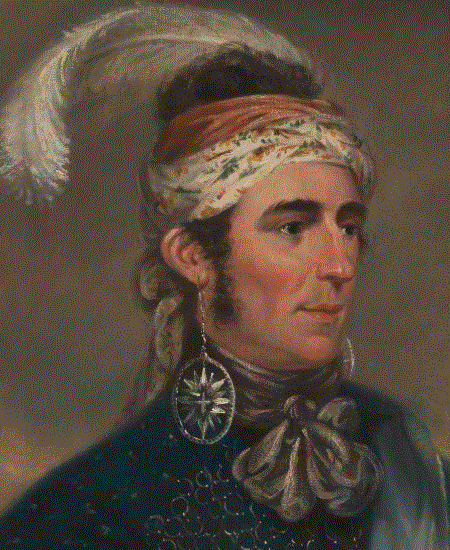Sovereign Nation Era Ends 1800-1827
1812
Resistance movement to westward expansion and War of 1812

By 1812, “tribal nations of the lower Great Lakes, including the Shawnee, Potawatomi, Ojibway, and others saw their lands at risk. The same was true for the Muscogee Creek, Seminole, Choctaw, Cherokee and Chickasaw in the south…. There were Indians who sided with the Americans -- Red Jacket and Farmer’s Brother led a Seneca faction to help the Americans. But most Indian nations sided with the British against the U.S, believing that a British victory might mean an end to expansion. In all, more than two dozen native nations participated in the war…. In addition to the Lower Great Lakes Indians, led by Tecumseh, and Southern Indians, the Mohawks fought under Chief John Norton to hold onto their lands in southern Quebec and eastern Ontario…. After the War of 1812, the U.S. negotiated over two hundred Indian treaties that involved the ceding of Indian lands, and 99 of these agreements resulted in the creation of reservations west of the Mississippi River.” (https://www.pbs.org/wned/war-of-1812/essays/native-nations-perspective/)